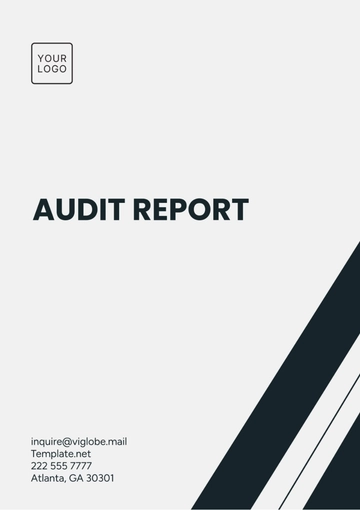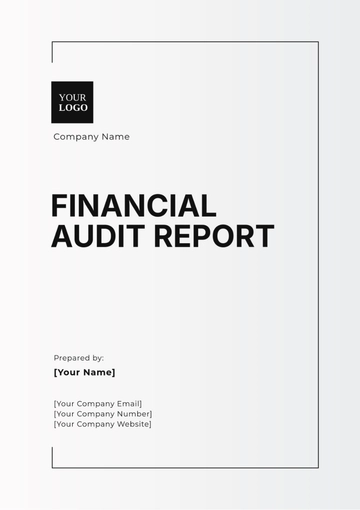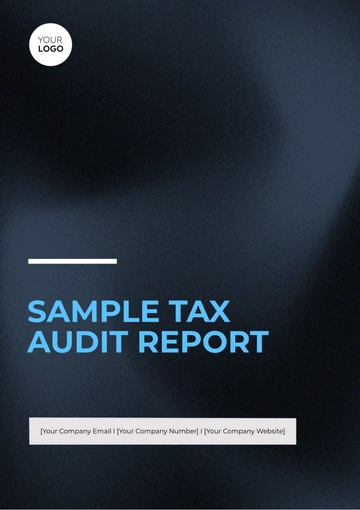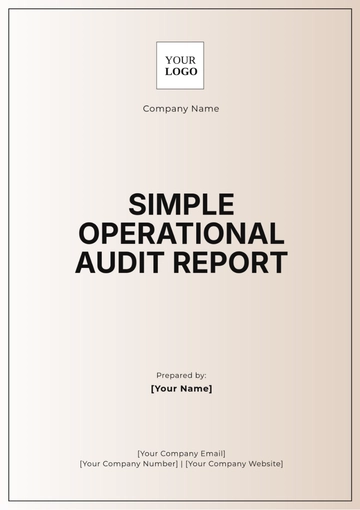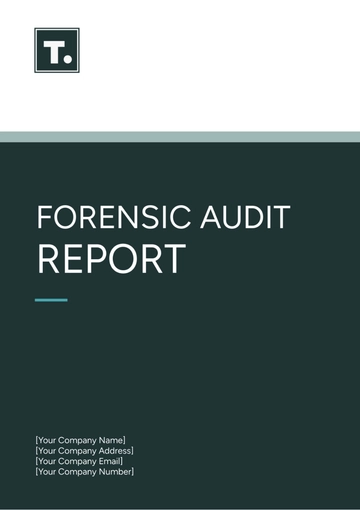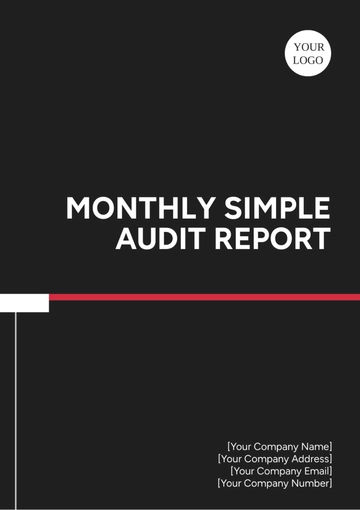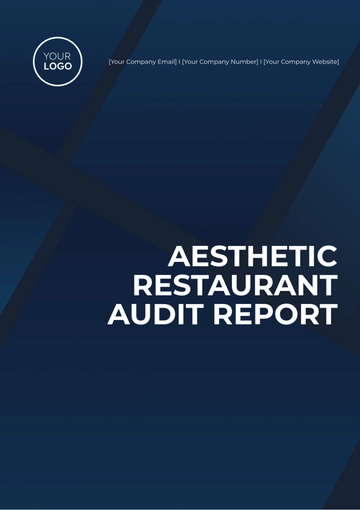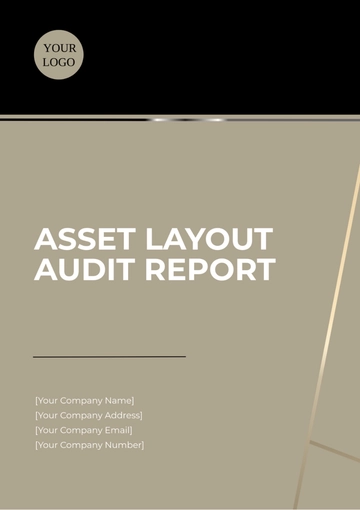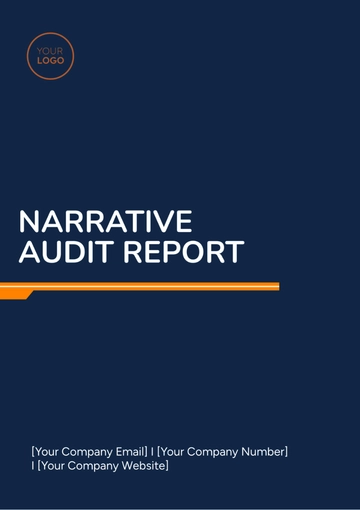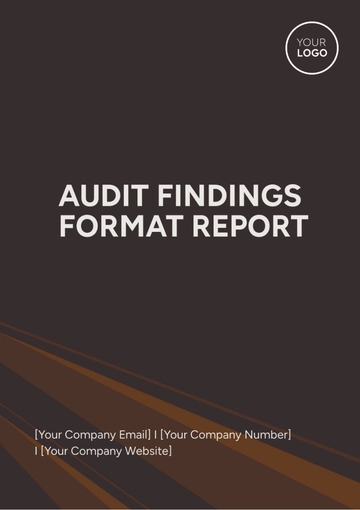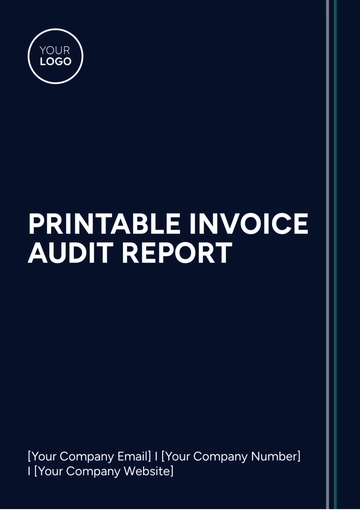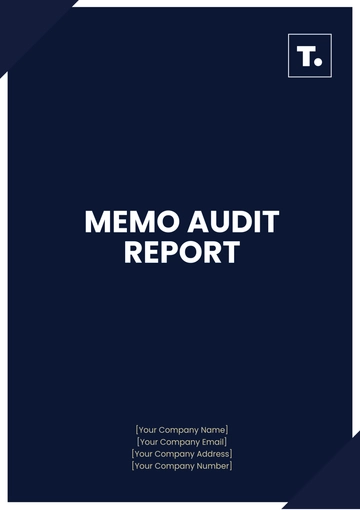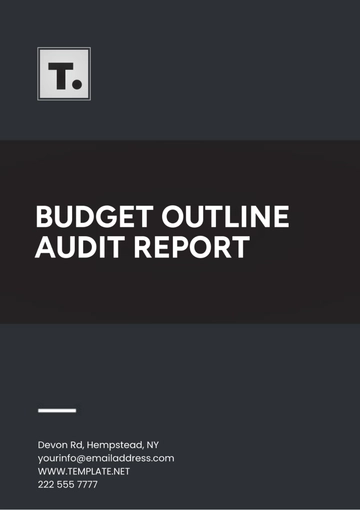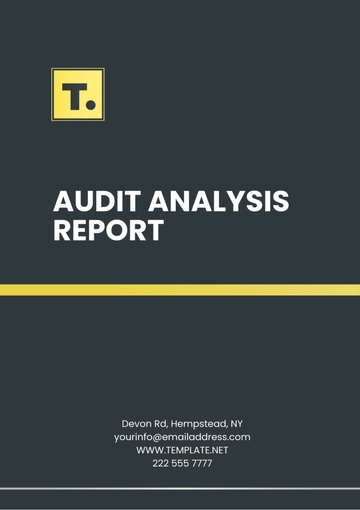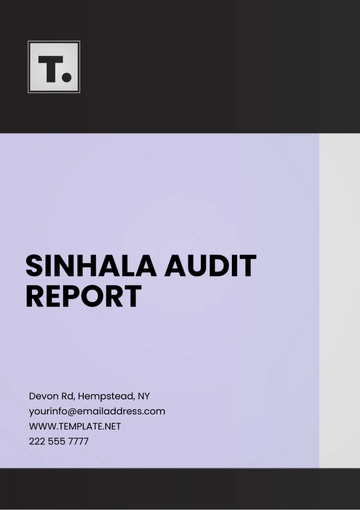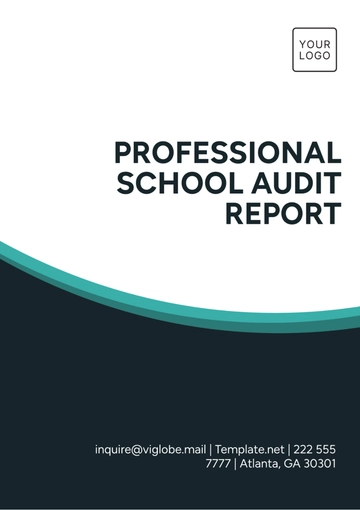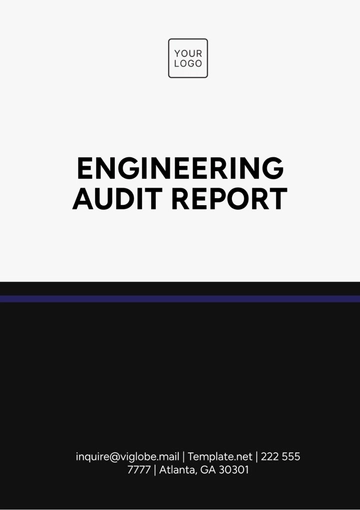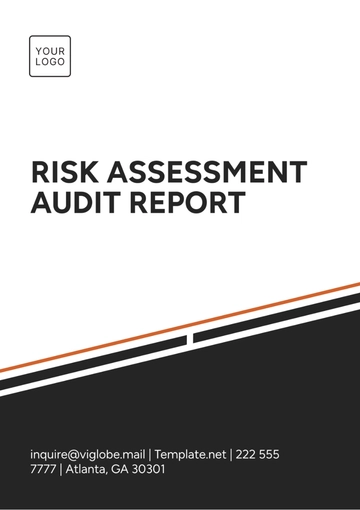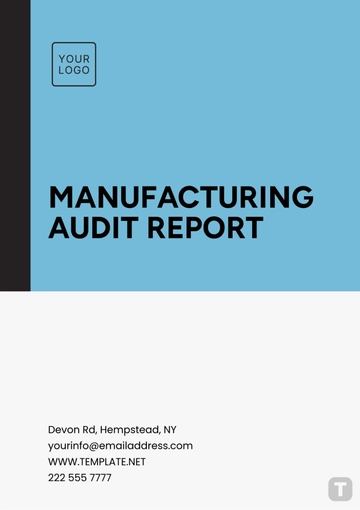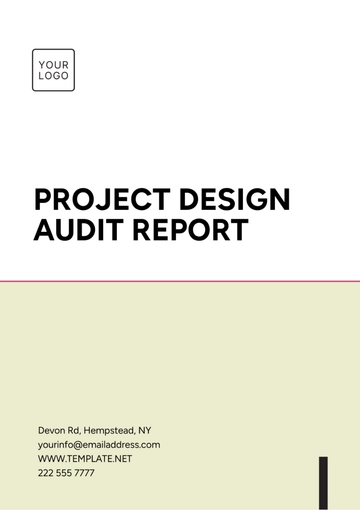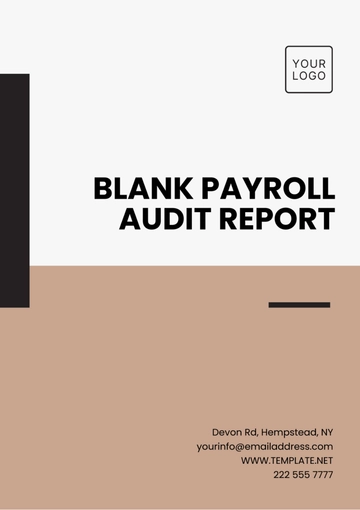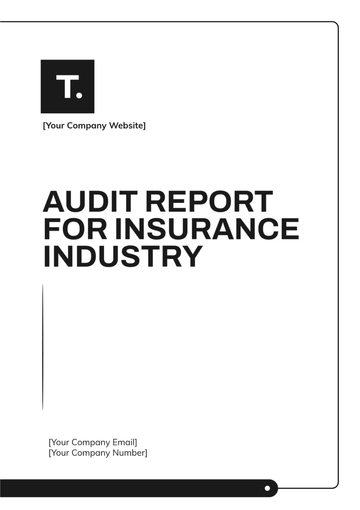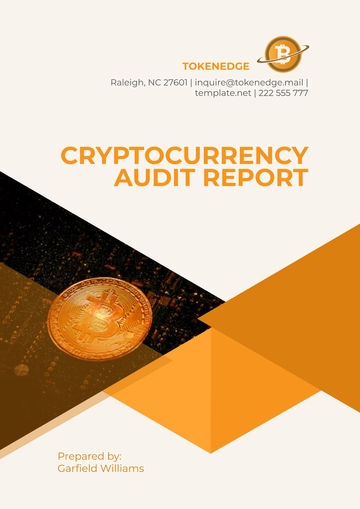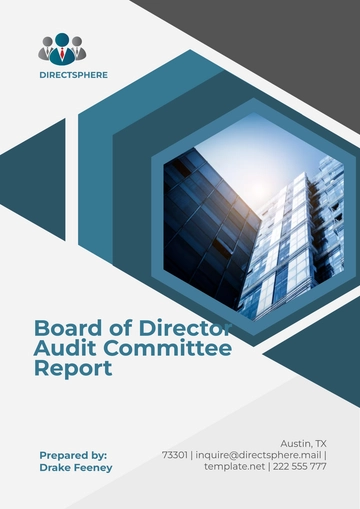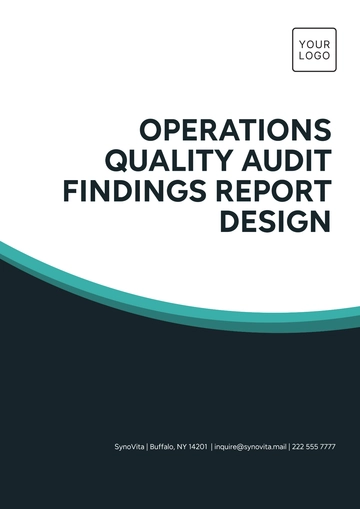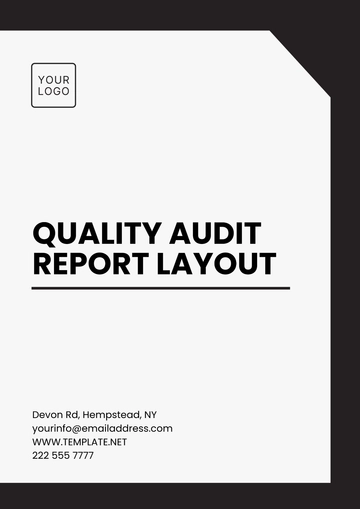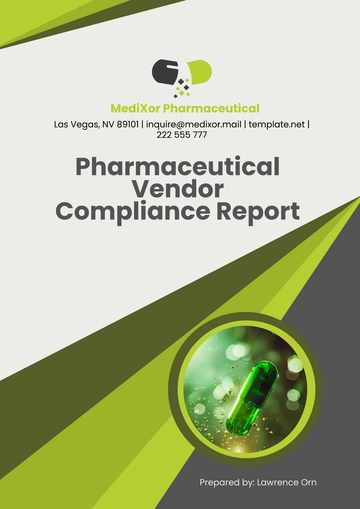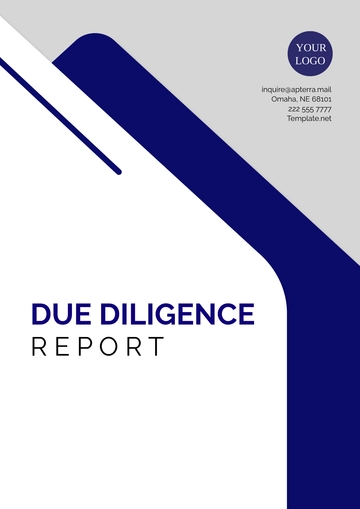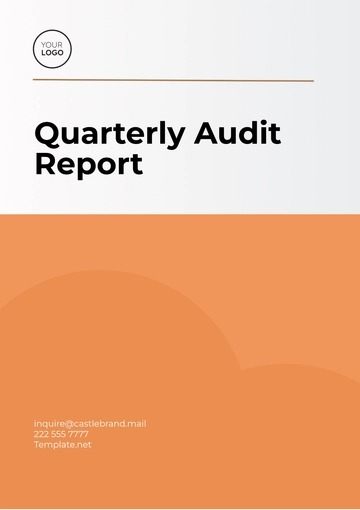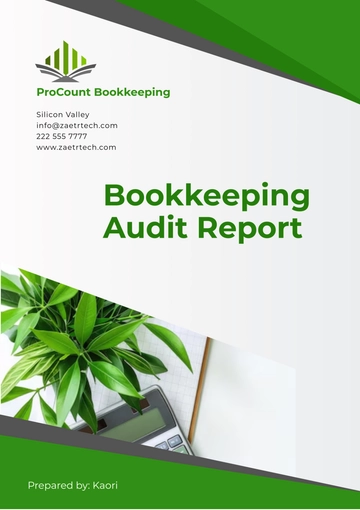Free Nursing Home Financial Compliance Audit Report

I. Executive Summary
A. Audit Objectives
The primary objective of this audit was to comprehensively assess the financial compliance of [Your Company Name] for the fiscal year [Year]. Specific focus areas included governance and oversight, revenue cycle management, expense management, financial reporting and documentation, compliance with laws and regulations, risk management, and fraud prevention. By conducting this audit, we aimed to identify areas of improvement and provide actionable recommendations to enhance financial integrity and regulatory compliance.
B. Scope of the Audit
The audit scope encompassed a thorough examination of financial records, policies, and procedures at [Your Company Name]. On-site visits were conducted to observe operational practices and interview key personnel involved in financial management. Sampling and analytical procedures were utilized to assess compliance with applicable regulations and standards.
C. Key Findings
Revenue cycle management deficiencies were identified, particularly in documentation accuracy and coding practices.
Expense management processes exhibited inadequacies, including questionable expense allocation methods and potential misallocation of costs.
Non-compliance with certain financial regulations and reporting requirements posed risks to the nursing home's financial integrity.
Governance and oversight mechanisms were found to be lacking, with weaknesses in internal controls and segregation of duties.
Risks related to fraud and financial mismanagement were identified, highlighting the need for enhanced fraud prevention measures and detection mechanisms.
D. Recommendations
To address the identified deficiencies, we recommend implementing robust documentation and coding procedures for revenue cycle management. Additionally, enhancing expense allocation methods and strengthening internal controls and oversight mechanisms are crucial steps toward improving financial compliance. Regular training programs for staff and establishment of fraud detection protocols are also recommended to mitigate risks and ensure regulatory compliance.
E. Conclusion
Addressing the findings of this audit and implementing the recommended measures will be instrumental in enhancing [Your Company Name]'s financial integrity and regulatory compliance. By proactively addressing areas of improvement, the nursing home can better serve its residents and stakeholders while maintaining financial transparency and accountability.
II. Introduction
A. Background
[Your Company Name], located in [State], has been providing long-term care services to elderly residents for [00] years. Governed by a Board of Directors, the facility is committed to delivering high-quality care while adhering to financial regulations and standards.
B. Purpose of the Audit
The primary purpose behind conducting the audit was to carefully evaluate the financial management practices in place at the [Your Company Name]. Simultaneously, it was designed to ensure that these financial practices were in absolute compliance with all regulations that were applicable. We took a meticulous approach, assessing the financial records, the policies in effect, as well as the prescribed procedures that were followed within the facility.
Through conducting this assessment, it was our goal to pinpoint any and every area that required improvement. Our intention was to offer constructive recommendations that, when implemented, could effectively enhance the financial integrity of the institution. We believed that this way we could also ensure heightened compliance with every regulatory requirement.
C. Methodology
The audit methodology involved a comprehensive review of financial records, policies, and procedures. On-site visits were conducted to observe operational practices and interview key personnel involved in financial management. Sampling and analytical procedures were utilized to assess compliance with relevant regulations and standards, ensuring a thorough and accurate assessment of financial compliance.
III. Regulatory Framework and Standards
A. Applicable Regulations
[Your Company Name] operates within a complex regulatory environment governed by various federal, state, and local financial regulations. These regulations include guidelines established by the Centers for Medicare & Medicaid Services (CMS), which outline requirements for billing practices, reimbursement documentation, and financial reporting. Additionally, state-specific regulations and industry standards further dictate compliance expectations for nursing home facilities.
B. Compliance Assessment
The compliance assessment conducted during this audit aimed to evaluate [Your Company Name]'s adherence to regulatory requirements and standards. By analyzing financial records, documentation practices, and operational procedures, we sought to determine the extent to which the facility complies with applicable regulations. This assessment provided insights into areas of strength as well as opportunities for improvement in achieving and maintaining financial compliance.
IV. Governance and Oversight
A. Governance Structure
[Your Company Name] operates under the governance of a Board of Directors, which is responsible for providing oversight and strategic direction for financial management activities. The Executive Management Team, led by the Administrator, is tasked with implementing policies and procedures established by the Board. However, during the audit, deficiencies were identified in the governance structure, particularly in terms of internal controls and oversight mechanisms.
B. Internal Controls
An effective system of internal controls is essential for ensuring the integrity and reliability of financial information. However, the audit revealed weaknesses in [Your Company Name]'s internal control environment, including deficiencies in segregation of duties and accountability. These weaknesses increase the risk of errors, fraud, and non-compliance, underscoring the need for improvements in governance and oversight mechanisms.
V. Revenue Cycle Management
A. Revenue Sources
[Your Company Name] generates revenue from various sources, including Medicare and Medicaid reimbursements, private pay, and other funding streams. Analysis of revenue sources and percentages revealed the facility's reliance on government reimbursements, highlighting the importance of accurate documentation and compliance with reimbursement guidelines.
Revenue Source | Percentage of Total Revenue |
|---|---|
Medicare | [00]% |
Medicaid | [00]% |
Private Pay | [00]% |
Other | [00]% |
B. Documentation and Coding
Accurate documentation and coding are essential for ensuring proper reimbursement and financial compliance. However, the audit identified deficiencies in documentation accuracy and coding practices at [Your Company Name]. Instances of incomplete or inaccurate documentation raise concerns regarding the facility's ability to support claims for reimbursement and comply with regulatory requirements.
In summary, the regulatory framework and standards provide the foundation for financial compliance, while governance and oversight structures ensure accountability and integrity in financial management practices. Revenue cycle management plays a critical role in revenue generation and requires meticulous documentation and coding to ensure compliance with reimbursement guidelines.
VI. Expense Management
A. Operating Expenses
[Your Company Name] incurs various operating expenses to maintain its operations and provide quality care to residents. These expenses encompass staffing costs, including salaries and benefits for healthcare professionals and support staff, as well as expenses related to supplies, utilities, and other overhead costs. A breakdown of operating expenses revealed the significant portion allocated to staffing, highlighting the importance of effective cost management in this area.
Expense Category | Percentage of Total Expenses |
|---|---|
Staffing | [00]% |
Supplies | [00]% |
Utilities | [00]% |
Other Overhead | [00]% |
B. Expense Allocation Methods
The audit assessed the methods and procedures used by [Your Company Name] to allocate expenses across different cost centers or departments. However, deficiencies were identified in expense allocation methods, leading to potential misallocation of costs and inaccuracies in financial reporting. Improvements in expense allocation processes are necessary to ensure accurate financial statements and compliance with regulatory requirements.
C. Cost Control Measures
Effective cost control measures are essential for optimizing resource utilization and maintaining financial sustainability. While [Your Company Name] has implemented some cost containment initiatives, opportunities for improvement exist in enhancing efficiency and reducing unnecessary expenditures. Implementing cost control measures will help the facility achieve its financial objectives while maintaining high-quality care for residents.
VII. Financial Reporting and Documentation
A. Financial Statements
[Your Company Name] prepares financial statements, including balance sheets, income statements, and cash flow statements, to communicate its financial performance and position. However, the audit revealed inconsistencies in financial reporting practices, raising concerns about the accuracy and reliability of financial information. Improvements in financial reporting processes are necessary to enhance transparency and facilitate informed decision-making.
B. Documentation Practices
Documentation is essential for supporting financial transactions and ensuring compliance with regulatory requirements. However, deficiencies were identified in documentation practices at [Your Company Name], including incomplete or insufficient records. Strengthening documentation practices will improve the audit trail and facilitate regulatory compliance, reducing the risk of errors and discrepancies in financial reporting.
In summary, effective expense management is crucial for maintaining financial sustainability and ensuring resources are allocated efficiently. Accurate financial reporting and documentation are essential for transparency and compliance with regulatory requirements, highlighting the need for improvements in these areas at [Your Company Name].
VIII. Compliance with Laws and Regulations
A. Regulatory Compliance
[Your Company Name] is subject to a myriad of federal, state, and local financial regulations governing its operations. These regulations encompass various aspects of financial management, including billing practices, reimbursement documentation, and reporting requirements. Despite efforts to comply with these regulations, the audit identified instances of non-compliance, posing risks to the facility's financial integrity and regulatory standing.
B. Compliance Assessment
The compliance assessment conducted during the audit aimed to evaluate [Your Company Name]'s adherence to regulatory requirements and standards. By analyzing financial records, documentation practices, and operational procedures, the audit identified areas of non-compliance and assessed the severity of these issues. This assessment provided insights into the facility's overall compliance status and highlighted the need for corrective action to address identified deficiencies.
C. Risk Assessment
Non-compliance with financial regulations exposes [Your Company Name] to various risks, including legal and financial repercussions, reputational damage, and potential loss of funding or accreditation. The audit conducted a comprehensive risk assessment to identify and prioritize risks associated with non-compliance. This assessment informed the development of recommendations aimed at mitigating risks and enhancing regulatory compliance.
IX. Risk Management and Fraud Prevention
A. Financial Risks
Financial risks pose significant challenges to [Your Company Name]'s operations and financial stability. These risks include fraud, misappropriation of funds, errors in financial reporting, and non-compliance with regulatory requirements. The audit identified specific financial risks associated with weaknesses in internal controls, inadequate documentation practices, and non-compliance with financial regulations.
B. Fraud Prevention
Preventing and detecting fraud is essential for safeguarding the financial interests of [Your Company Name] and maintaining public trust. The audit evaluated existing fraud prevention measures and detection mechanisms to assess their effectiveness in mitigating fraud risks. Recommendations were provided to strengthen fraud prevention efforts, enhance detection capabilities, and establish protocols for reporting and investigating suspected fraud.
In conclusion, compliance with laws and regulations is critical for [Your Company Name] to maintain financial integrity, regulatory compliance, and public trust. Identifying and addressing areas of non-compliance and implementing effective risk management and fraud prevention measures are essential steps toward achieving these objectives.
X. Recommendations
A. Documentation and Coding
Implement comprehensive training programs for staff involved in documentation and coding processes to ensure understanding of regulatory requirements and best practices.
Conduct regular audits of documentation and coding practices to monitor compliance and identify areas for improvement.
Enhance documentation templates and tools to facilitate accurate and thorough recording of patient care and billing information.
B. Expense Management
Review and revise expense allocation methods to ensure accuracy and consistency across cost centers.
Implement cost control measures, such as inventory management systems and vendor negotiation strategies, to reduce unnecessary expenditures.
Develop budgeting and forecasting processes to better anticipate and plan for future expenses and revenue streams.
C. Internal Controls
Strengthen internal controls by implementing segregation of duties and accountability mechanisms to prevent and detect errors and fraud.
Conduct periodic assessments of internal control effectiveness and make adjustments as needed to address evolving risks and challenges.
Provide ongoing training and support to staff on the importance of internal controls and their role in maintaining financial integrity.
D. Fraud Prevention
Establish clear policies and procedures for reporting suspected fraud and misconduct, including whistleblower protections.
Implement fraud detection tools and analytics to monitor financial transactions and identify anomalies or red flags indicative of fraudulent activity.
Conduct regular fraud risk assessments to identify vulnerabilities and prioritize mitigation efforts.
XI. Conclusion
In conclusion, addressing the findings of this audit and implementing the recommended measures will strengthen [Your Company Name]'s financial management practices, enhance regulatory compliance, and mitigate financial risks. By prioritizing improvements in documentation and coding, expense management, internal controls, and fraud prevention, the facility can ensure transparency, accountability, and sustainability in its operations.
Acknowledgment
We would like to extend our appreciation to the management and staff of [Your Company Name] for their cooperation and assistance during the audit process. Their dedication to financial compliance and commitment to providing quality care to residents are commendable, and we look forward to supporting their efforts in achieving and maintaining excellence in financial management.
- 100% Customizable, free editor
- Access 1 Million+ Templates, photo’s & graphics
- Download or share as a template
- Click and replace photos, graphics, text, backgrounds
- Resize, crop, AI write & more
- Access advanced editor
Streamline your nursing home financial compliance audit process with Template.net's editable and customizable Nursing Home Financial Compliance Audit Report Template. This comprehensive template, equipped with an AI Editor Tool, ensures accuracy and efficiency in assessing governance, revenue cycle management, expense management, and regulatory compliance. Elevate your auditing experience with this user-friendly solution from Template.net.
You may also like
- Sales Report
- Daily Report
- Project Report
- Business Report
- Weekly Report
- Incident Report
- Annual Report
- Report Layout
- Report Design
- Progress Report
- Marketing Report
- Company Report
- Monthly Report
- Audit Report
- Status Report
- School Report
- Reports Hr
- Management Report
- Project Status Report
- Handover Report
- Health And Safety Report
- Restaurant Report
- Construction Report
- Research Report
- Evaluation Report
- Investigation Report
- Employee Report
- Advertising Report
- Weekly Status Report
- Project Management Report
- Finance Report
- Service Report
- Technical Report
- Meeting Report
- Quarterly Report
- Inspection Report
- Medical Report
- Test Report
- Summary Report
- Inventory Report
- Valuation Report
- Operations Report
- Payroll Report
- Training Report
- Job Report
- Case Report
- Performance Report
- Board Report
- Internal Audit Report
- Student Report
- Monthly Management Report
- Small Business Report
- Accident Report
- Call Center Report
- Activity Report
- IT and Software Report
- Internship Report
- Visit Report
- Product Report
- Book Report
- Property Report
- Recruitment Report
- University Report
- Event Report
- SEO Report
- Conference Report
- Narrative Report
- Nursing Home Report
- Preschool Report
- Call Report
- Customer Report
- Employee Incident Report
- Accomplishment Report
- Social Media Report
- Work From Home Report
- Security Report
- Damage Report
- Quality Report
- Internal Report
- Nurse Report
- Real Estate Report
- Hotel Report
- Equipment Report
- Credit Report
- Field Report
- Non Profit Report
- Maintenance Report
- News Report
- Survey Report
- Executive Report
- Law Firm Report
- Advertising Agency Report
- Interior Design Report
- Travel Agency Report
- Stock Report
- Salon Report
- Bug Report
- Workplace Report
- Action Report
- Investor Report
- Cleaning Services Report
- Consulting Report
- Freelancer Report
- Site Visit Report
- Trip Report
- Classroom Observation Report
- Vehicle Report
- Final Report
- Software Report
